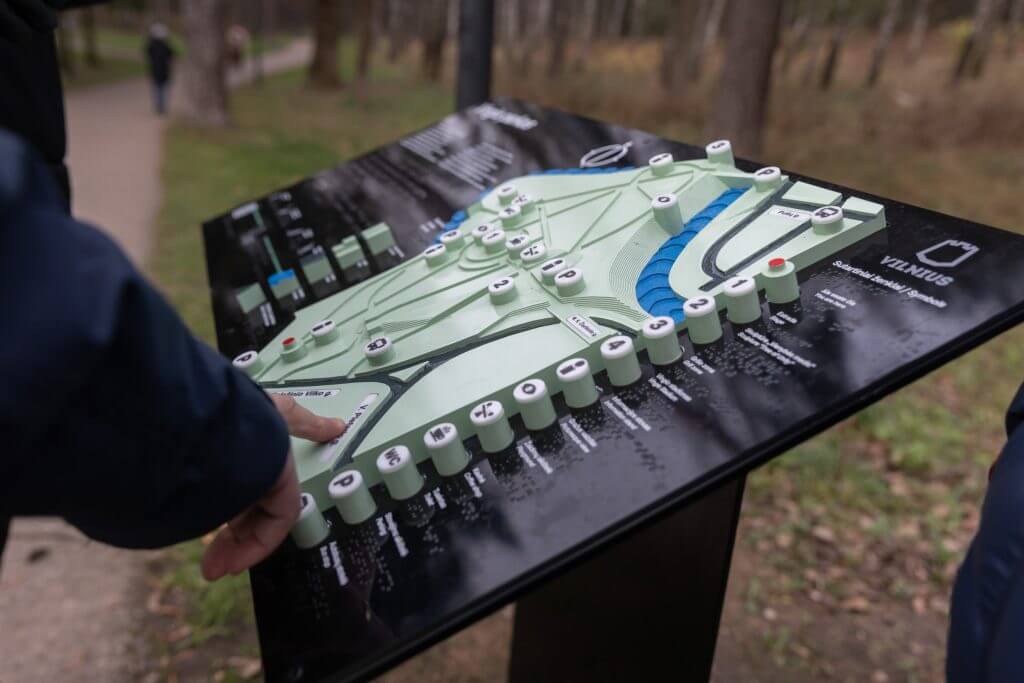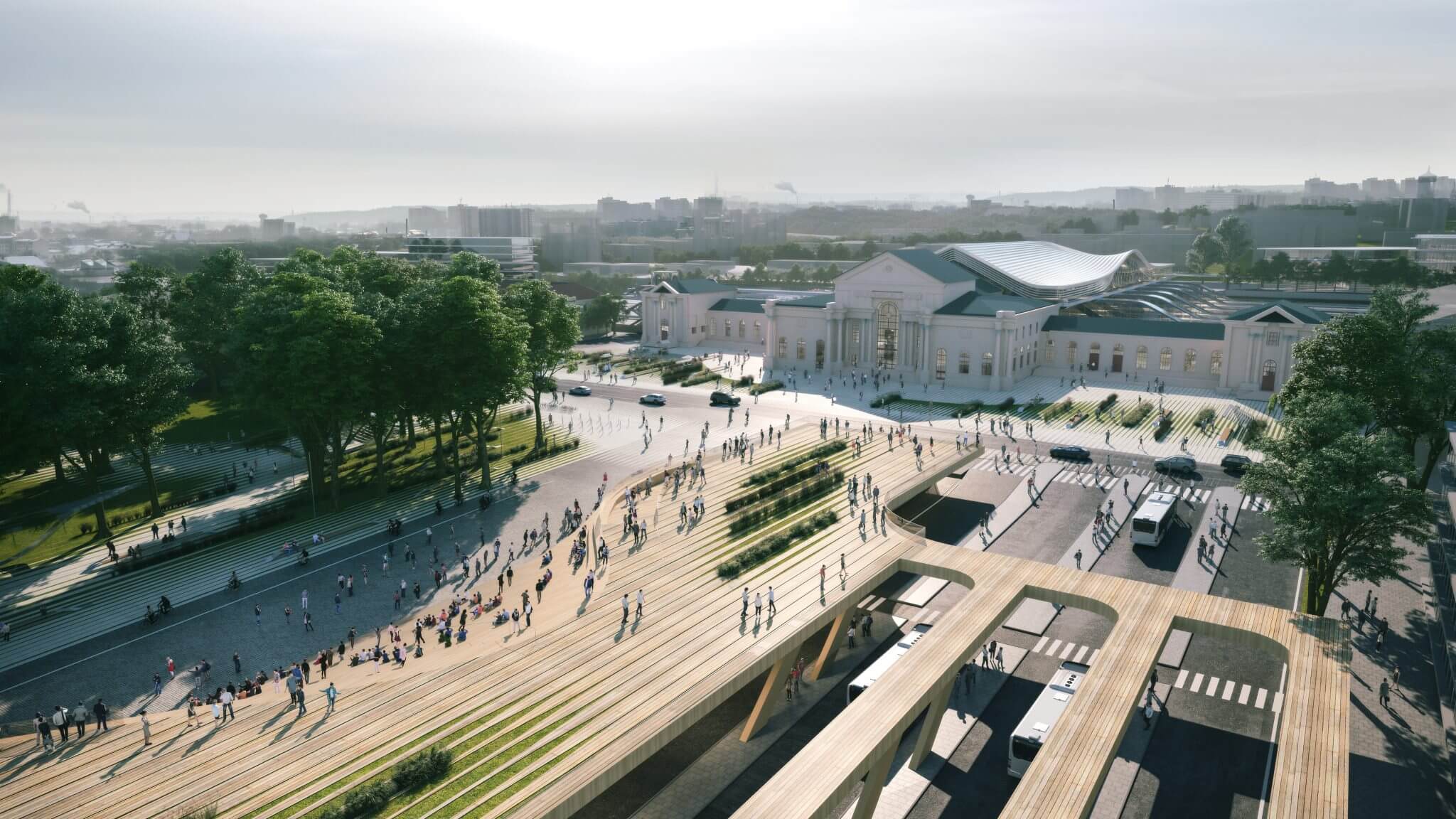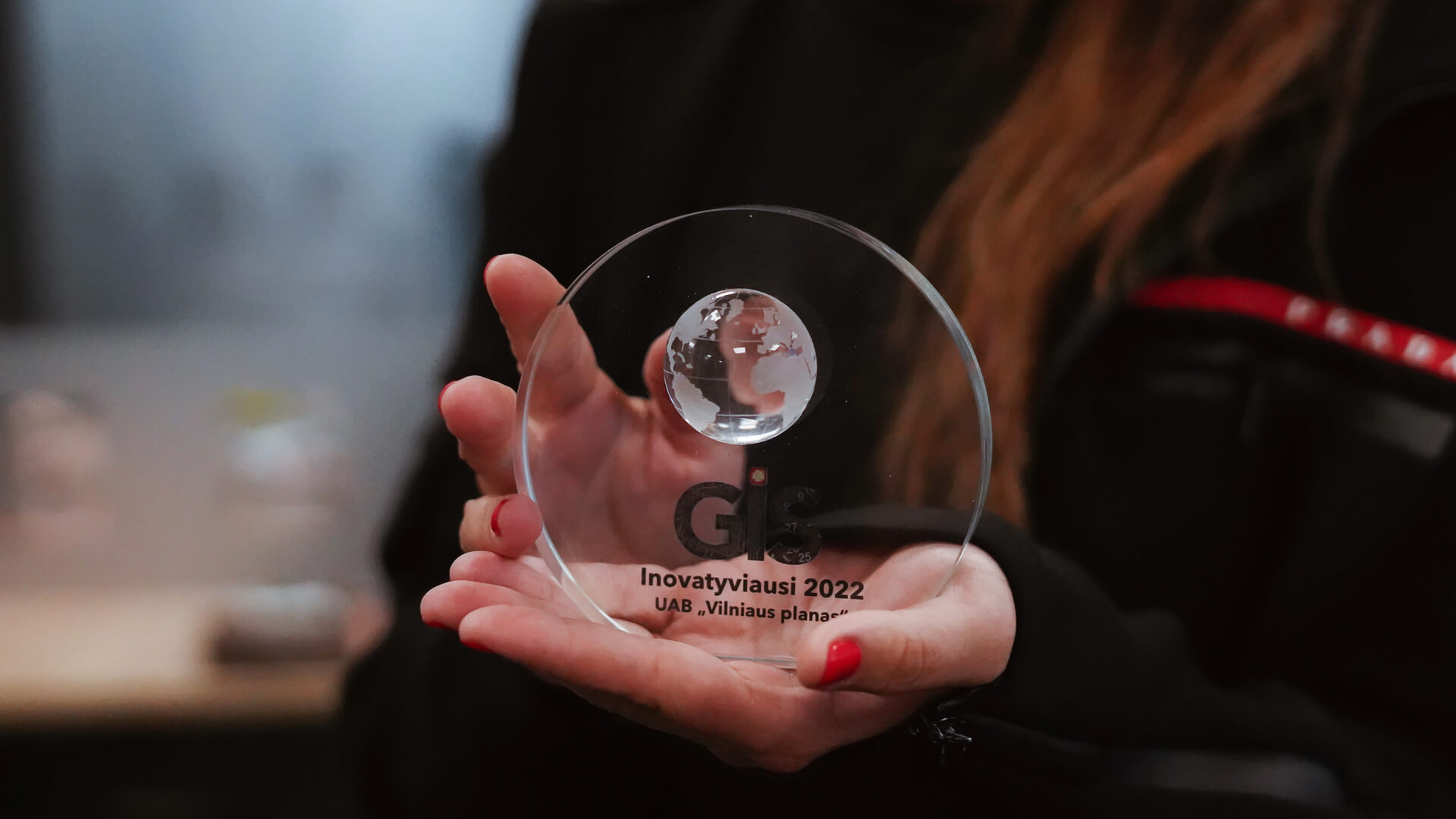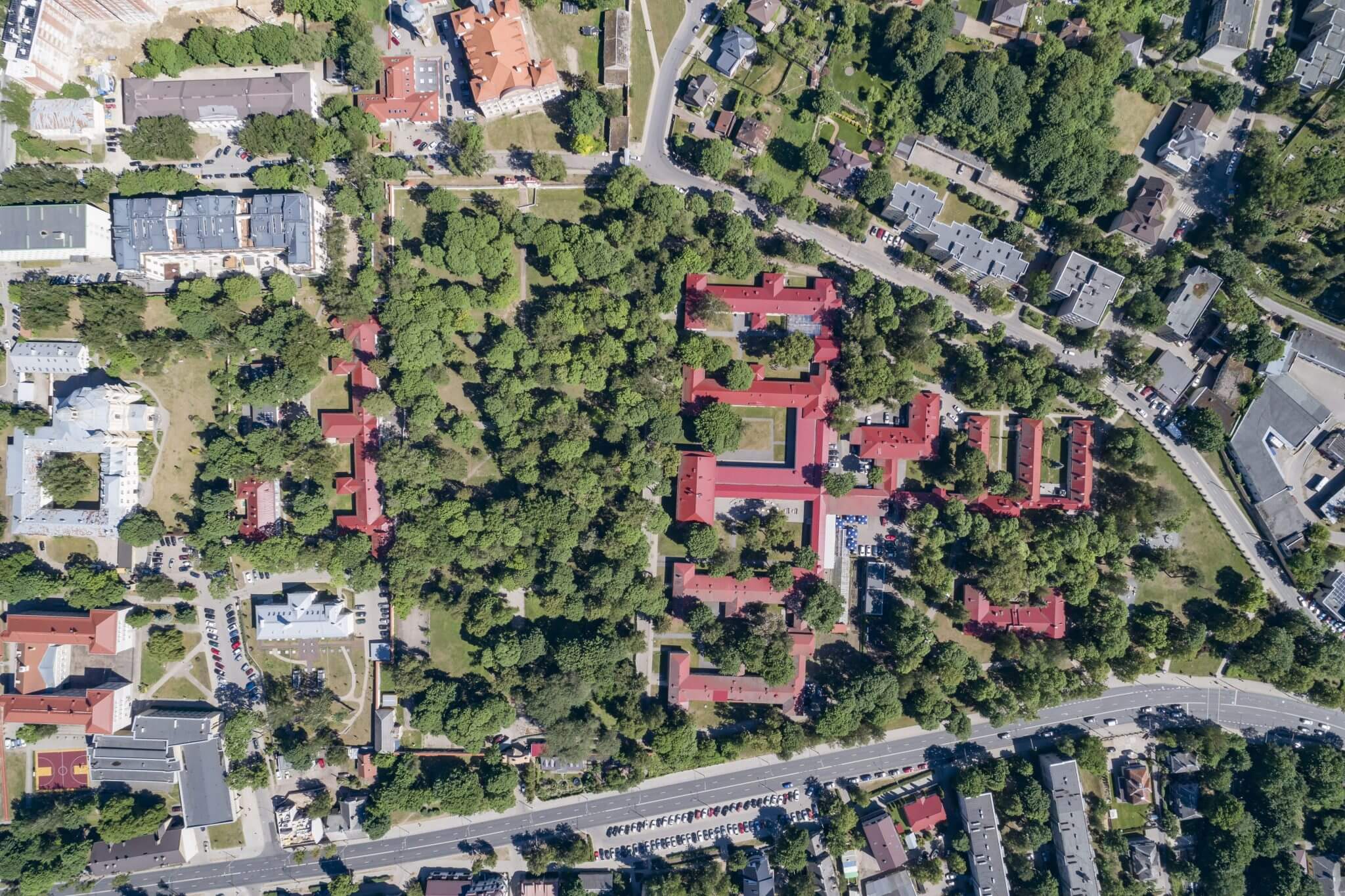Two new stands have been installed in the capital’s Vingis Park to provide information for all visitors according to their individual needs. These are the first maps and displays of a public space to follow the principles of universal design. By 2030, all information boards in parks and squares in Vilnius will be built to this standard.
Attention all residents
“Universal design is first and foremost about focusing on every resident and making the city accessible to all equally. In this case, we are talking about a stand and a map based on the principles of universal design, where the information is equally accessible to the tall and the short, the seated, the sighted and the blind,” said Vilnius Deputy Mayor Tomas Gulbinas. The information stand and the tactile map were designed by the company Vilniaus Plan. They were created in cooperation with the Lithuanian Association of the Visually Impaired and Blind, other organisations of people with disabilities and the Lithuanian Library for the Blind. The map was produced by the company Business and Disability Development Group, which also employs visually impaired workers, which won a public procurement procedure. “As these are the first elements of the wayfinding system, we asked various communities to test them and provide comments. We improved the design of the stands and the map based on their feedback and learned on our own,” said R?ta Matonien?, Chief Advisor of the Urban Landscape Department of Vilnius City Municipality, as the municipality’s representatives were looking at the map.
More to come
The map includes a tactile diagram of the Vingis Park area with the locations of the outstanding, important landmarks and other relevant information – elements such as the Neris River, the forest and meadows, the beach, the trails and streets in Vingis Park and other elements are tangibly depicted. The text information is also in Braille. In the near future, the universally-designed stands will also appear in other parks and squares in the capital. Universal design is all about making public products suitable for everyone – children, seniors and people with special needs. One product must fit all, so there is no need to design products separately for each group. For example, stairs are abandoned in favour of walkways that can be used by people with and without wheelchairs, washbasins that can be accessed by both adults and children, etc. Universal design principles include adapting products for people with special needs, the possibility to adapt to individual needs (e.g. adjustable height). Universal design products should be intuitive and easy to use, with clear information in a variety of formats, including Braille and audio. The environment and products can be used by people with reduced physical strength. These principles are followed in Scandinavian countries, particularly Sweden, the USA and others.





